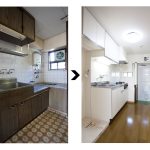When designing a landscape in Buckeye, AZ, it’s essential to consider the unique climate of the region. With its arid desert environment, high temperatures, and minimal rainfall, Buckeye demands a landscape that thrives on minimal water and heat tolerance. The key to achieving a beautiful, sustainable outdoor space is by incorporating desert plants into your landscape design.
A desert landscape designer in Buckeye can help you choose the right plants and materials that are not only suited to the desert climate but also add beauty and texture to your yard. In this blog, we’ll explore how to effectively integrate desert plants into your landscape, from selecting drought-tolerant species to designing with sustainable materials that complement the natural desert surroundings.
1. Understand the Benefits of Desert Plants
Desert plants are naturally adapted to survive in arid climates, making them the perfect choice for landscaping in Buckeye. They thrive in hot temperatures and can withstand long periods without water, which is ideal for homeowners who want to conserve water and reduce maintenance. Here are some key benefits of using desert plants in your landscape design:
-
Water Efficiency: Desert plants are designed to retain water, making them highly drought-tolerant. Many desert plants, like cacti and succulents, have evolved to store moisture in their thick stems and leaves, allowing them to survive with minimal irrigation.
-
Low Maintenance: These plants require little to no maintenance once established. They are resistant to pests, diseases, and extreme weather, making them a low-cost, low-effort option for homeowners.
-
Aesthetic Appeal: Desert plants come in a wide variety of shapes, sizes, and colors, offering a unique aesthetic that adds visual interest and texture to your yard. From the towering saguaro cactus to the colorful blooms of desert wildflowers, these plants can create a stunning and diverse landscape.
When working with a custom yard design in Buckeye, incorporating desert plants can help you achieve a beautiful, sustainable outdoor space that requires minimal upkeep.
2. Choosing the Right Desert Plants for Your Yard
Selecting the right desert plants for your landscape design is crucial to ensuring they thrive in the Buckeye climate. While there is an abundance of desert plant species to choose from, some are better suited to local conditions than others. Here are a few types of desert plants commonly used in custom yard design Buckeye:
Drought-Tolerant Shrubs and Bushes
-
Texas Sage: This popular shrub is known for its vibrant purple flowers and silvery-green foliage. It’s a perfect addition to desert landscapes due to its low water requirements and heat tolerance.
-
Creosote Bush: A hardy shrub that thrives in the desert heat, the creosote bush is known for its fragrant leaves and ability to survive with little water. It can also help add texture to your yard.
Cacti and Succulents
-
Saguaro Cactus: An iconic symbol of the Arizona desert, the saguaro cactus is a large, slow-growing cactus that thrives in dry conditions. It’s ideal for adding height and drama to your landscape design.
-
Prickly Pear Cactus: With its flat pads and vibrant flowers, the prickly pear cactus is not only drought-tolerant but also provides edible fruit that can be harvested and used in recipes.
Ground Covers and Small Plants
-
Red Yucca: This ornamental plant is perfect for low-maintenance ground cover. With its long, spiky leaves and bright red tubular flowers, it adds a splash of color to your landscape.
-
Desert Marigold: A hardy, drought-tolerant flower that produces bright yellow blooms, the desert marigold is ideal for planting in clusters to create vibrant patches of color.
By working with a desert landscape designer in Buckeye, you can ensure that you select the best plants for your yard’s specific conditions.
3. Incorporating Desert Plants into Your Landscape Design
Now that you’ve selected the right desert plants for your landscape, it’s time to incorporate them into your design. A professional landscape designer can help create a layout that integrates these plants in a way that enhances your outdoor space. Here are some design tips for incorporating desert plants into your yard:
Create a Focal Point with Large Desert Plants
Large desert plants, such as saguaros and organ pipe cacti, make excellent focal points in your landscape. Position these plants strategically to draw the eye and create a dramatic effect in the yard. These plants can be placed at the end of a pathway or near the entrance to your home to make a bold statement.
Use Desert Plants for Borders and Edging
Smaller plants like prickly pear cacti and desert marigolds work well as borders or edging around your garden beds or walkways. These plants add color, texture, and contrast while helping define different areas of your yard. A desert landscape designer in Buckeye can help you design planting beds that complement your hardscaping and create a cohesive look.
Group Plants by Watering Needs
Although desert plants are drought-tolerant, it’s still essential to group them based on their watering needs. Plants like succulents and cacti may need very little water, while others, such as Texas sage, may require occasional deep watering. By grouping plants with similar needs, you can ensure they all thrive while minimizing water waste.
4. Xeriscaping: A Sustainable Landscaping Solution
Xeriscaping is a landscaping technique that focuses on water conservation by using drought-tolerant plants, efficient irrigation systems, and sustainable practices. Xeriscaping is perfect for desert climates like Buckeye, where water resources can be limited.
-
Mulching: Applying mulch around your desert plants helps retain moisture in the soil, reduces evaporation, and keeps weeds at bay. Organic mulches, like wood chips or bark, can also add a decorative touch to your yard.
-
Efficient Irrigation: Using drip irrigation systems is ideal for desert landscaping. These systems deliver water directly to the roots of the plants, minimizing water waste and ensuring that your plants get the hydration they need without overwatering.
If you’re interested in creating a sustainable, water-efficient yard, a custom yard design Buckeye can help you integrate these xeriscaping techniques into your landscape plan.
5. Partnering with an Experienced and Trusted Contractor
Designing and planting a desert landscape requires expertise and knowledge of local conditions. By partnering with an experienced and trusted contractor, you can ensure that your landscape design is both beautiful and sustainable. A skilled landscape designer will help you select the best plants for your yard, create a functional layout, and implement water-efficient practices.
If you’re ready to transform your outdoor space, reach out to a professional landscape designer in Buckeye who can help you incorporate desert plants and create a custom yard that thrives in the desert climate.






